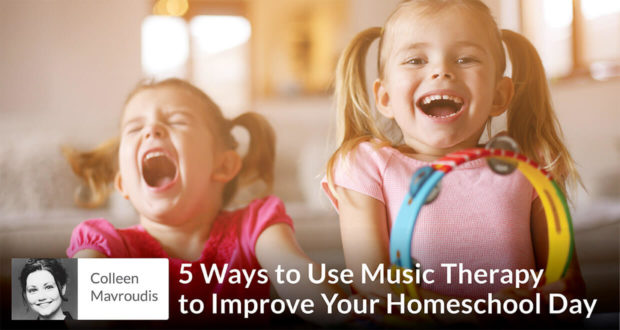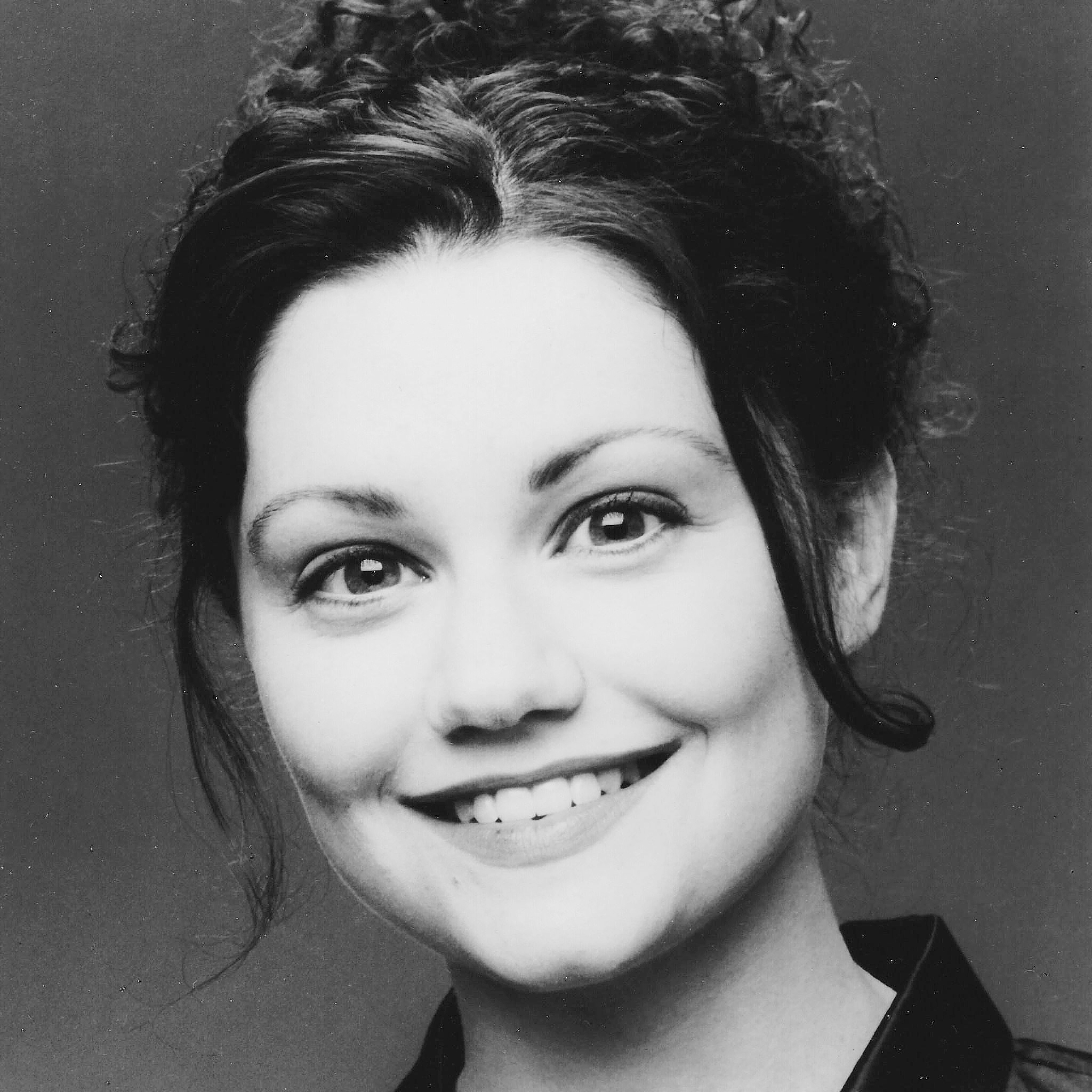Summary
Colleen Mavroudis, a homeschooling mom with a Bachelors in Music Therapy, offers five fun strategies to use music activities to aid in the homeschool day.Homeschooling days can get hectic… and crazy… and stressful. How can a mom turn the day around, calm the chaos, and lead the whole crew back toward happy productivity?
Music therapy!
The structured, intentional use of music and music activities to meet goals or effect change is a nice, short definition for Music Therapy. Music may not soothe the savage beasts in our homes all of the time, but music is a very helpful tool.
While teaching and running a household, any new tool in your mom-bag-of-tricks is an asset. Below, I hope you find a few ideas from my experience as a homeschooling mom and music therapist that can help your homeschool day.
1. Music for Teaching
Most of us have used music for learning at some point, even if it was only learning to sing our ABC’s. In our house, the younger children use songs to learn a host of valuable information, such as:
- days of the week
- months of the year
- their telephone number and address
- the spelling of their first and last name
- common prayers like the Hail Mary and the Our Father
As our older children have progressed into more academic subjects, coming up with little ditties or rhythmic sayings to help memorize spelling words, science definitions, and geography facts has become commonplace. The songs we use are occasionally original tunes we think up.
More often, however, our learning songs are recycled tunes we already know. We simply fit the words or information that the student must remember into the rhythm of the original words.
2. Music and Movement
Clapping and movement, used in conjunction with music, can help to boost both the speed of learning and the retention of information. While learning styles in children may differ, all children benefit from having information presented and reviewed through multiple forms of input.
Listening to spoken words or reading information predominantly uses the language centers in the brain. Music stimulates many parts of the brain simultaneously. Add movement to the music, and you have a brain-engaging experience that can help the learner grasp and retain the information being presented.
Having kids get up out their seats to clap, stomp or dance while singing or chanting the information that needs to be learned can be both helpful and fun.
It also makes the repetition of review less monotonous than simply stating facts repeatedly.
3. Music for Transitions
Transitions from one activity to the next are hard for some children, especially pre-schoolers. This is sometimes true even when the next activity might be enjoyable. Having a short song that signals the change in gears can be helpful. Just before naptime in our house, we used to have “milk and story time.”
I would start singing the Milk and Story Time song, and usually, my little people would sing along while ascending the stairs to get ready for story time and nap. The song we sang was just a short repetitive tune I made up with the simple words, “It’s milk and story time,” repeated to the end of the tune.
If you’re not up for composing, that’s okay. Many of our signal songs are common tunes with new words to suit our purpose. Other times of the day where transition songs can be helpful are just before sitting down to begin school work, teeth brushing time, bath time, and getting ready to go out.
Some transitions take a little more time. Meet your children where they are emotionally and then help to move them to where they must be.
For example, if small children are running like crazy people through my house (which often happens here), I might try playing the Freeze Dance Game with them. I tend to use a piano for this game, but I have also sung or used a drum to create a beat for the game.
The first song I play or sing for the game would be quick and loud. The kids would happily dance along, because the music matches their mood and energy level at that time. I would play a few bars and then abruptly stop. They would freeze, usually in a funny pose.
The next song would still be upbeat, but a little slower. We would continue with a few more song snippets. I would then remind them they must listen not only for when the music stops, but also for how the music sounds.
The dancing should match the music’s tempo and feel. While I would switch between faster paced and slower songs to keep the game interesting, the overall trend would be to decrease both the volume and tempo of the songs as the game progressed.
A good ending piece is Brahms’ lullaby played softly; however, this has been known to cause some children to fall down and fake snore on the floor. If your repertoire is not large, you could even keep using the same tune repeatedly. Just keep changing how you sing, hum, or play the tune so the kids can change their movements to it.
This game is also great for practicing active listening skills!
4. Music to Set the Mood
Music can have a physical effect on us. Don Campbell, in his book The Mozart Effect, notes that music can affect the listener’s heart rate, respiration rate and even the velocity of the brain waves. By tailoring the background music that plays in our homes, we can help our children get into the right frame of mind for the task at hand.
Upbeat, fast-paced music could help to give that needed energy boost to start a big school project or tackle that daunting cleaning job that really needs to be finished (a.k.a. putting away the toys on the family room floor). Conversely, slow-paced, soft music might be perfect for the evening wind-down.
5. Music Therapy for Homeschooling Moms
Could you use a little dance party fun? Cranking up some favorite tunes from your high school days and dancing with the kids can be a ton of fun. Music tends to be associated with memories, feelings and periods in our lives.
Go to your musical happy place and choose songs that will make you feel good.
Comment below and share a favorite song that is used in your homeschool!

 Seton Magazine Catholic Homeschool Articles, Advice & Resources
Seton Magazine Catholic Homeschool Articles, Advice & Resources

